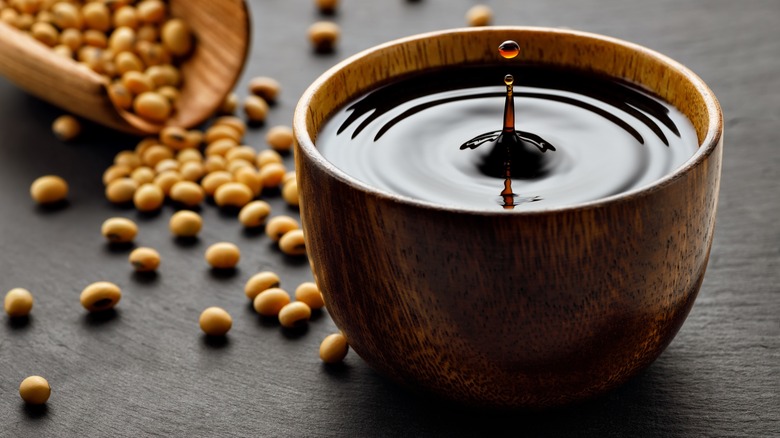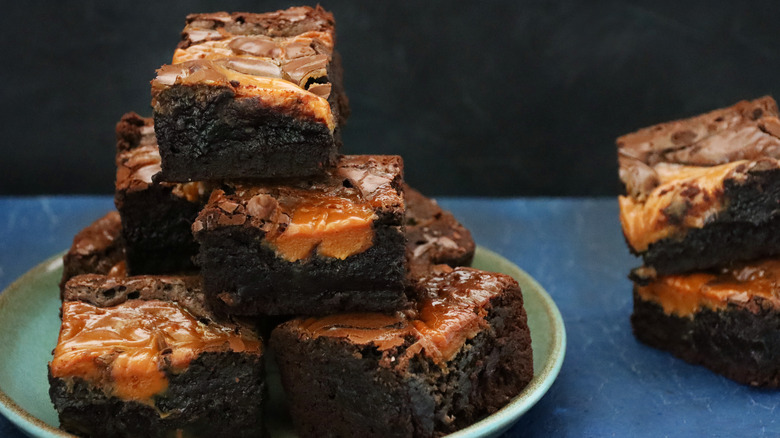Why You Should Start Adding Soy Sauce To Desserts
Bakers have been successfully experimenting with savory ingredients in our favorite sweets, such as incorporating miso paste into chocolate chip cookies and tahini into banana bread. So, it was only a matter of time before soy sauce made its appearance in desserts. Like miso, this Japanese condiment — brewed from fermented soybeans — adds umami and depth to both savory and sweet dishes in a way that salt alone cannot achieve.
We know that salt is essential in baking: It enhances flavor, balances sweet ingredients, and impacts texture. So, how would the addition of soy sauce affect baked goods, and which recipes would be the best candidates? Food Republic spoke with a soy sauce expert, Chef Andrew Hunter, the Corporate Executive Chef at Kikkoman Sales, USA, to learn about incorporating soy sauce into desserts. What we discovered made us wonder why we hadn't tried this sooner.
"Soy sauce works especially well paired with chocolate," Hunter shares. Not only does it add saltiness, but it also contributes "caramel notes, enhancing the flavor and adding depth to sweet applications."
If you're concerned that your baked goods will taste like soy sauce, don't be. "Your desserts won't taste like soy sauce, but will have rich umami deliciousness that will make them unforgettable," Hunter assures.
Soy sauce pairs especially well with chocolate and caramel
With various types of soy sauce on the market (dark, light, tamari), the kind you choose can affect both the taste and color of your recipe. Generally, one teaspoon of kosher salt can be substituted with two teaspoons of all-purpose soy sauce. For gluten-free recipes, tamari is a suitable option.
In addition to recipes dominated by chocolate, the caramel notes of soy sauce pair well with chewy salted caramel candies, or a smooth caramel sauce to top vanilla ice cream or cheesecake. Its burnt sugar flavor suggests that soy sauce would also be an exciting addition to crème brûlée. You could even try marrying the two flavors by making salted caramel coconut brownies. Or, use soy sauce in cookies that contain toffee or butterscotch chips to add depth. A splash of soy sauce can even replace vanilla extract or dark liquors in recipes. Just halve the measurement when substituting with soy sauce.
We recommend using unsalted butter to control the salt content as you experiment with different soy sauce recipes. If needed, a sprinkle of flaky sea salt can always be added when the baked good comes out of the oven.


